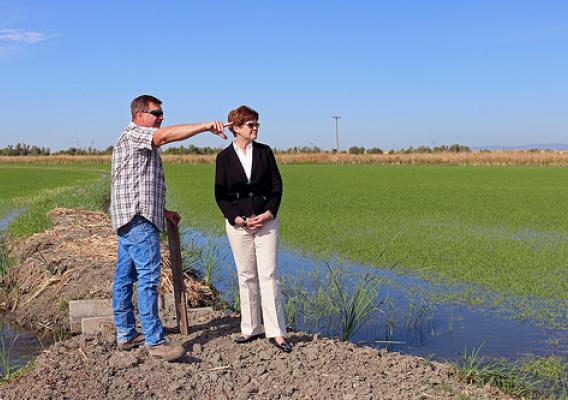This summer, USDA is highlighting partnerships to invest in the future of rural America. Our partners work with us year after year to leverage resources and grow economic opportunities. They are the key to ensuring our rural communities thrive. Follow more of our stories at #RuralPartners.
My passion and commitment for conservation started on the farm learning from our first and finest conservationists: American farmers. Our nation’s farmers and ranchers care deeply about the land, which is why they are incredible environmental stewards. Earlier this month, I visited the Yolo Bypass Wildlife Area, a popular wildlife refuge just minutes from downtown Sacramento. Here, farmers like the DeWit family are growing rice and providing some of the best wildlife habitat in North America.
Mike DeWit and his father, Jack, brought me right into the middle of the Sacramento Valley rice fields, where more than a half million acres are used as a source of America’s sushi rice. Equally valuable is the role these rice fields play as a habitat for nearly 230 wildlife species, including providing nearly sixty percent of the winter diet for millions of migrating ducks and geese. It was a thrill to walk on the levee of a shallow-flooded, brilliantly green field and observe several pairs of nesting American Avocets all around. When I noticed a nest with four small eggs, I knew that it represented a part of the future generation of wildlife.









